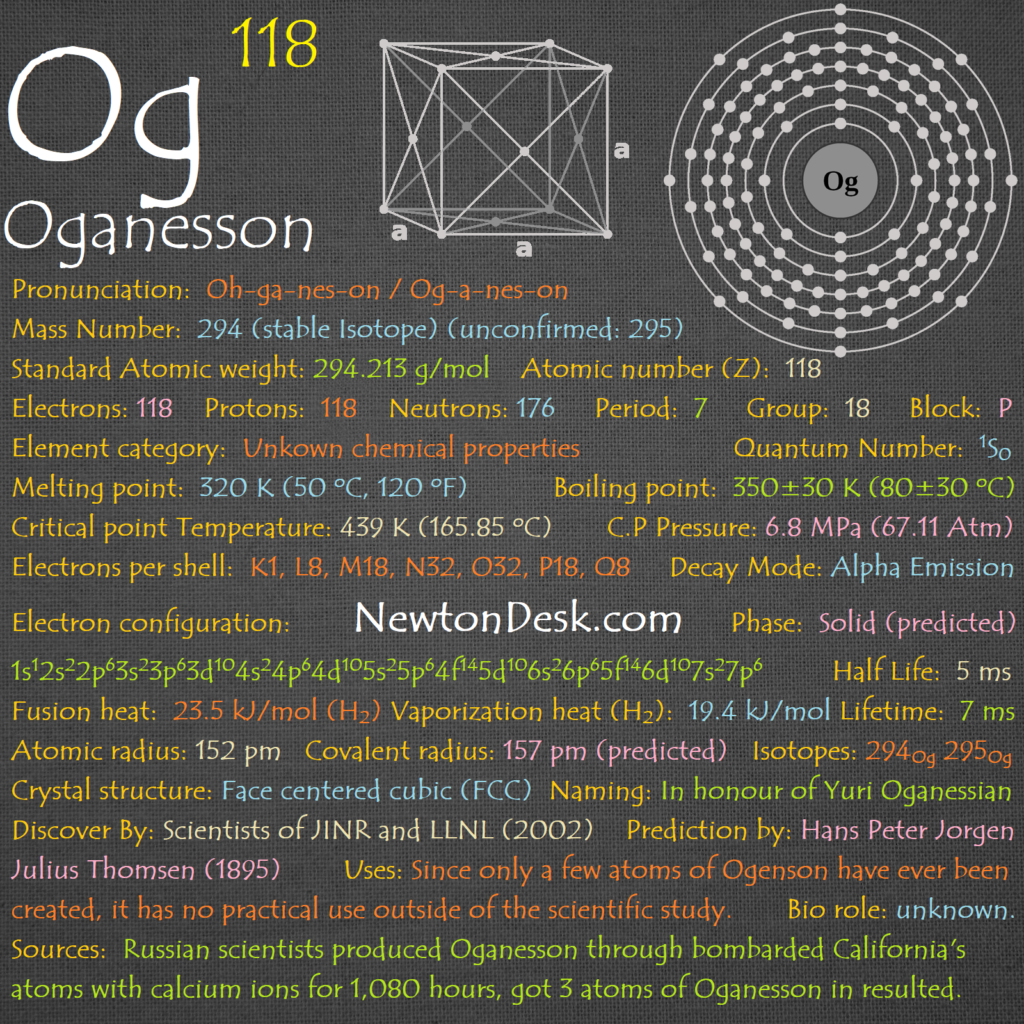85 At (Astatine)
Appearance: Unknown, (Probably metallic)
Mass number: 210
Atomic weight: 209.9871 g/mol
Atomic number (Z): 85
Electrons: 85
Protons: 85
Neutrons: 125
Group: 17
Period: 6
Block: P
Element category: Halogen
Electrons per shell: K2, L8, M18, N32, O18, P7
Electron configuration: 1s22s22p63s23p63d104s24p64d105s25p64f145d106s26p5
Phase: Solid
Melting point: 575 K (302 oC)
Boiling point: 610 K (337 oC)
Density: 6.35±0.15 g/cm3
Half Life(s): 29000
Lifetime(s): 42000
Decay mode: β+ decay
Molar volume: 32.94 cm3/mol
Heat of fusion: 6 kJ/mol
Heat of vaporization: 54.39 kJ/mol
Oxidation states: -1, +1, +3, +5, +7
Ion charge: At–
Electronegativity: Pauling scale: 2.2
Valence: 7
Electron affinity: 279.1 kJ/mol
Ionization energies: 1st: 899.003 kJ/mol
Covalent radius: 150 pm
Vander waals radius: 202 pm
Crystal structure: Face centered cubic
Thermal conductivity: 1.7 W/(m.K)
CAS Number: 7440-68-8
Naming: After Greek Astatos (Meaning ‘Unstable’)
Discovery: Dale R. Corson, Kenneth Ross MacKenzie, Emilio Segre (1940)
Isotopes: 209At 210At 211At
Uses: Currently no uses for astatine outside of research.
Biological role: It is toxic due to its dangerous radioactivity
Natural abundance: Astatine-211 is made in nuclear reactors by the neutron bombardment of bismuth-200.
#astatine


